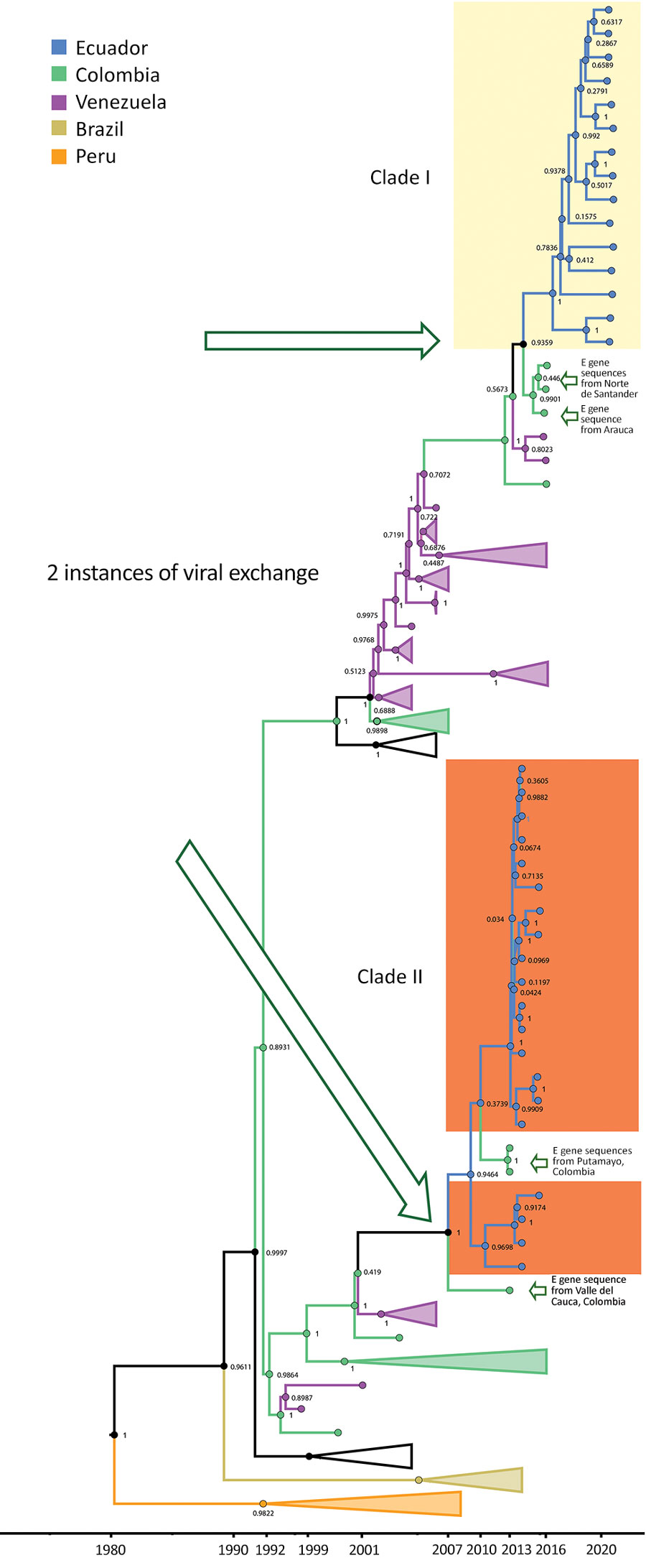Volume 29, Number 5—May 2023
Synopsis
Phylogenetic Analysis of Transmission Dynamics of Dengue in Large and Small Population Centers, Northern Ecuador
Figure 5

Figure 5. Maximum-clade credibility tree for dengue virus serotype 2 in study of transmission dynamics of dengue in large and small population centers, northern Ecuador. Tree was constructed using whole-genome sequences from Ecuador (blue), Colombia (green), and Venezuela (purple), combined with envelope gene sequences from Colombia departments (Nariño, Valle del Cauca, Putumayo, and Norte de Santander), and generated in BEAST software (https://beast.community). Within Ecuador, samples from Esmeraldas Province are within the yellow shaded area, and El Oro Province samples are within the orange shaded area. Posterior probabilities are shown in internal nodes.
1These senior authors contributed equally to this article.
Page created: March 14, 2023
Page updated: April 18, 2023
Page reviewed: April 18, 2023
The conclusions, findings, and opinions expressed by authors contributing to this journal do not necessarily reflect the official position of the U.S. Department of Health and Human Services, the Public Health Service, the Centers for Disease Control and Prevention, or the authors' affiliated institutions. Use of trade names is for identification only and does not imply endorsement by any of the groups named above.